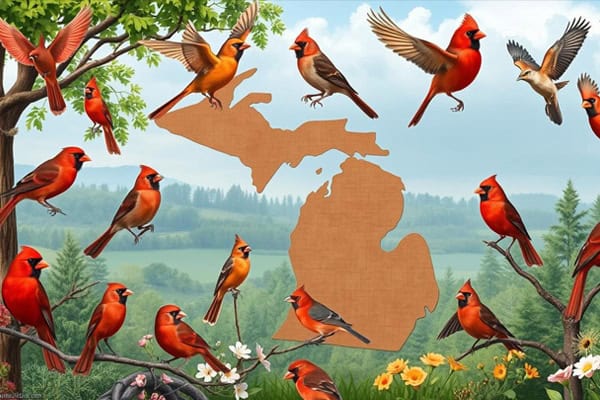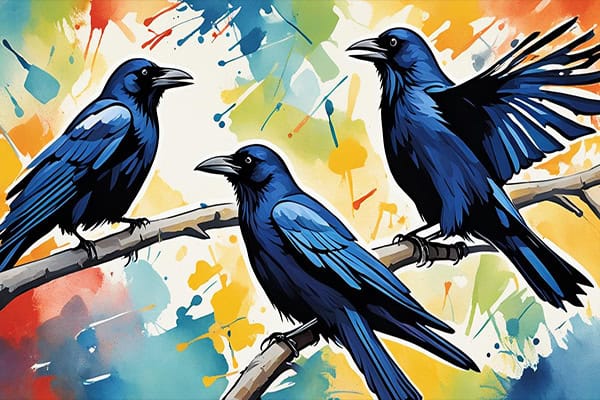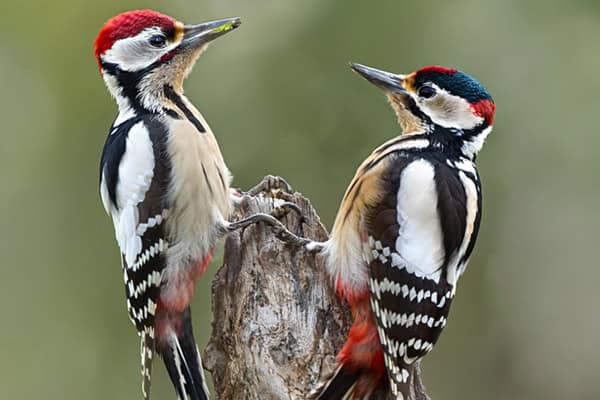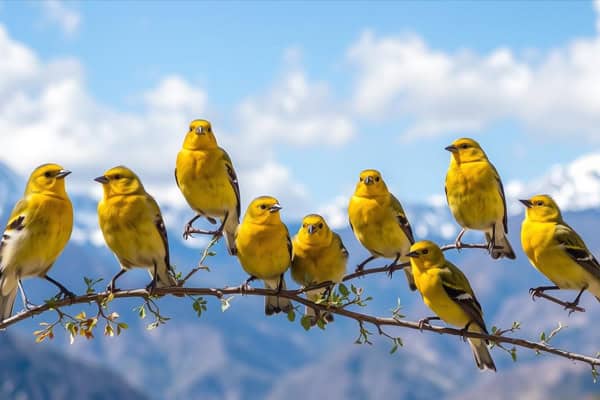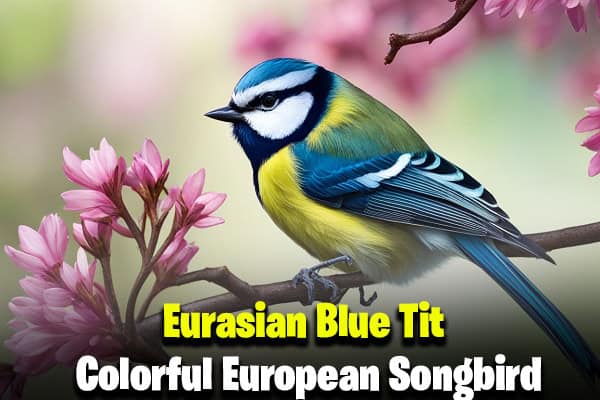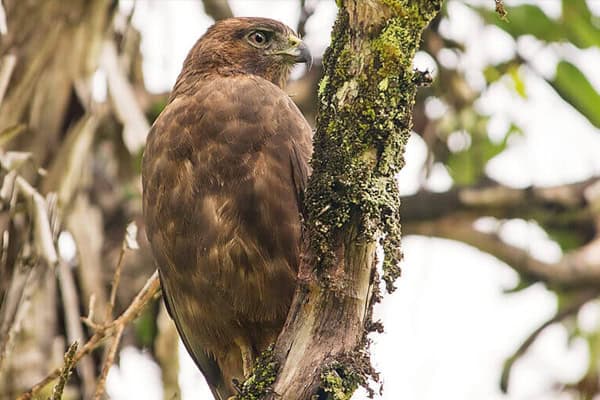12 Types of Red Birds Found In Michigan! (With Photos)
Red birds in Michigan, Did you know Michigan is home to over 400 birds? Among them, red birds stand out with their vibrant colors. This guide will show you 12 types of red birds in Michigan. We’ll cover their beauty and diversity.
Whether you’re an expert or new to birdwatching in Michigan, we’ve got you covered. We’ll share insights on their unique features, behaviors, and where they live.
Join us as we explore how to spot these stunning red birds in Michigan. Let’s appreciate their role in nature together. Let’s start this colorful bird adventure!
Common Red Birds Found In Michigan
- Northern Cardinal
- House Finch
- American Robin
- Scarlet Tanager
- Common Redpoll
- Pine Grosbeak
- Purple Finch
- Red Crossbill
Characteristics of Common Red Birds
In Michigan, we find a variety of red birds that catch our eye. Their colors range from bright red to orange and even brown. This makes birdwatching exciting. The size of these birds also varies, from small to quite large.
One of the most striking things about red birds is their plumage. Male birds often have bright red feathers. Females tend to have more subdued colors. This helps us tell males from females when identifying birds in Michigan. Other features like eye patterns and unique markings are also key to identifying them.
Let’s look at some common red birds in Michigan and their key traits:
| Bird Species | Coloration | Size | Distinctive Features |
|---|---|---|---|
| Northern Cardinal | Bright red in males, brownish in females | 8.3-9.1 inches | Prominent crest and thick bill |
| American Robin | Red-orange breast | 8.5-11 inches | Yellow bill and white eye crescents |
| Scarlet Tanager | Brilliant red | 7-8 inches | Black wings and tail |
| House Finch | Red on males, streaked brown on females | 5.5-6.5 inches | Short tail and distinctive chirping |
Learning about red bird characteristics makes birdwatching more rewarding. It boosts our enjoyment and helps us identify birds in Michigan more effectively.
1. Northern Cardinal
- Name: Cardinalis cardinalis
- Size: 8.3–9.3 in
- Diet: Seeds, fruits, insects
- Lifespan: Up to 15 years
- Wingspan: 9.8–12.2 in
- Weight: 1.5–1.7 oz
The Northern Cardinal is a favorite among Michigan’s red birds. Its bright color and distinct features make it a key birdwatching sight. Learning how to identify it helps us tell it apart from other birds.

Identifying Features of Northern Cardinals
Male Northern Cardinals are known for their bright red feathers. They also have a black mask around their beak and a tall crest on their head. Females are less vibrant, with warm colors and reddish highlights on their wings, tail, and crest.
Behavior and Habitat Preferences
Northern Cardinals are friendly and love to be around people. They visit gardens and parks often, making them popular with bird lovers. They eat seeds, fruits, and insects, so bird feeders with sunflower seeds can draw them in. Knowing what they like helps us create spaces that welcome them.
| Feature | Male Cardinal | Female Cardinal |
|---|---|---|
| Coloration | Bright red plumage | Brownish-yellow with reddish accents |
| Black Mask | Prominent | Less defined |
| Crest | High and pronounced | Present but often fewer distinct |
| Diet | Seeds, fruits, insects | Seeds, fruits, insects |
2. House Finch
- Name: Haemorhous mexicanus
- Size: 5–6 in
- Diet: Seeds, fruits, insects
- Lifespan: Up to 11 years
- Wingspan: 7.9–9.8 in
- Weight: 0.6–1 oz
The House Finch brightens our urban landscapes with its vibrant colors. Males stand out with their bright red plumage. Learning about their traits makes us appreciate these birds more. They show clear differences in color between males and females.

Males vs. Females: A Distinctive Appearance
Males have rosy red heads and chests and brownish bodies. This bright color clearly shows they are males. Females, on the other hand, have a more subdued look with browns and streaks. This difference makes them easy to tell apart in parks and gardens.
Ideal Feeding Locations and Diet
House Finches love urban areas and can often be found at bird feeders in Michigan. They eat seeds, fruits, and flowers. Their varied diet makes them common at feeders across the state. This makes birdwatching and interacting with nature in our yards easy.
3. American Robin
- Name: Turdus migratorius
- Size: 9–11 in
- Diet: Insects, earthworms, fruits
- Lifespan: Up to 14 years
- Wingspan: 12–16 in
- Weight: 2.7–3 oz
The American Robin is a well-known bird in Michigan, often seen as spring arrives. It’s easy to spot because of its bright red breast. Let’s dive into the unique traits of American Robins, their nesting habits, and their beautiful songs.
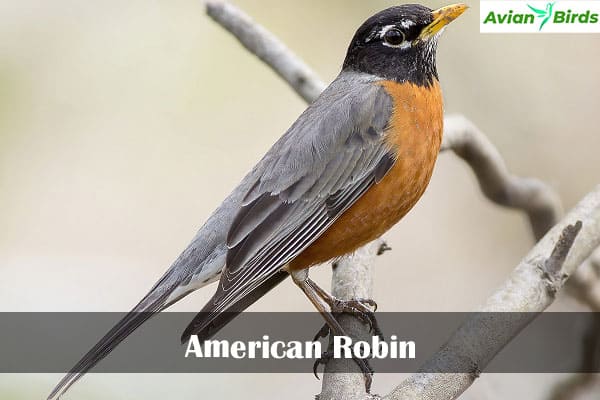
Physical Characteristics and Coloration
The American Robin Red Birds of Michigan is a medium-sized bird about 9 to 11 inches tall. Its red breast and grayish-brown back make it stand out. The head is darker, with a yellow bill that adds to its vibrant look. Young robins have a speckled breast, making them easy to spot early on.
Nesting Habits and Sounds
Robins build their nests in shrubs, trees, and even on building ledges. They’re adaptable to city life. A typical nest is made of grass, mud, and twigs, keeping the eggs safe and warm. The female lays 3 to 5 pale blue eggs, and both parents take care of them.
In spring, the American Robin’s song fills the air. Birdwatchers love its sweet and cheerful tune. This song helps attract mates and mark territory. Their songs make our outdoor time more enjoyable.
Related Video:
| Features | Description |
|---|---|
| Size | 9 to 11 inches in length |
| Coloration | Rusty red breast, grayish brown back |
| Nest Location | Shrubs, trees, building ledges |
| Egg Color | Pale blue |
| Song Characteristics | Melodic, cheerful tunes heard during the day |
4. Scarlet Tanager
- Name: Piranga olivacea
- Size: 6.3–7.5 in
- Diet: Insects, fruits
- Lifespan: Up to 12 years
- Wingspan: 9.8–11.4 in
- Weight: 0.8–1.3 oz
Exploring Michigan’s forest birds is exciting, and learning about the Scarlet Tanager is key for birdwatchers. This bird stands out with its bright red feathers and black wings. It blends into the forest’s dappled light, making it fun to spot.

Unique Identification Tips
To spot a Scarlet Tanager Red Birds of Michigan, look for these key features:
- The adult males have bright red feathers, easy to see in the breeding season.
- Female Scarlet Tanagers are harder to spot, with olive-yellow feathers that blend into the leaves.
- They have short, thick beaks perfect for eating their food.
- Listen to their chirpy song to find them in the trees.
Preferred Habitats and Diet
Scarlet Tanagers live in mixed deciduous forests, especially where oak and hickory trees grow. These forests offer shelter and food for their diet. They mainly eat:
- Fruits and berries from trees and shrubs.
- Insects, especially in the breeding season to feed their young.
Knowing where these birds nest and hunt helps us spot them in Michigan’s woods.
5. Common Redpoll
- Name: Acanthis flammea
- Size: 4.5–5.5 in
- Diet: Seeds, insects
- Lifespan: Up to 8 years
- Wingspan: 7.5–8.7 in
- Weight: 0.4–0.7 oz
The Common Redpoll is a beautiful winter birds in Michigan. It has a pale red vest and moves with energy. This small finch brightens our snowy scenes. Let’s learn more about its unique traits and behaviors in the cold months.
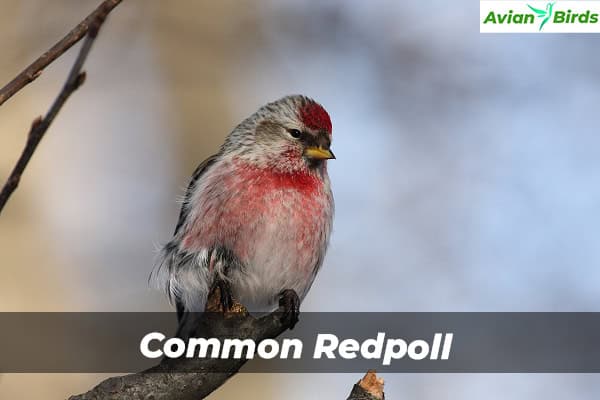
Identifying Features and Behavior
When we see a Common Redpoll, its size and bright colors stand out. Males have a rosy red forehead patch and colorful sides. Females are less colorful but still stand out with their streaked wings and back.
These birds love tiny seeds from birch and alders. They often feed in groups, making it fun to watch. Their social behavior and love for small seeds show how adaptable they are in Michigan’s winter.
6. Pine Grosbeak
- Name: Pinicola enucleator
- Size: 7.9–10 in
- Diet: Seeds, fruits, buds, insects
- Lifespan: Up to 9 years
- Wingspan: 13–14 in
- Weight: 1.8–2.8 oz
The Pine Grosbeak is a standout among Michigan’s finches. It wows bird lovers with its big size and bright colors. Males shine with their reddish-pink feathers. Their unique calls add to the winter magic.
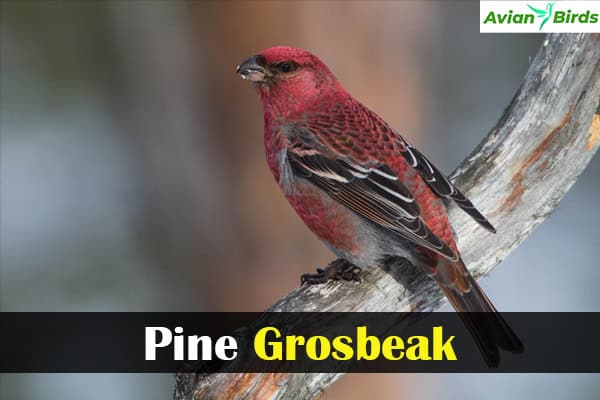
Appearance and Vocalization
The Pine Grosbeak’s look is truly captivating. Males show off a deep rosy color, while their grayish wings and back add contrast. Females have a calmer look, with gentle browns and yellow touches. These differences make them easy to spot.
Their sounds are as beautiful as their looks. They make soft, whistling calls that fill the air in winter. Learning their calls can make birdwatching more exciting, especially when trying to draw them to feeders.
What they eat is key to bringing Pine Grosbeaks around. They love high-energy foods like sunflower seeds and berries. By offering these foods, we can make our yards a welcoming spot for these colorful finches during winter.
| Attribute | Males | Females |
|---|---|---|
| Plumage Color | Reddish-pink | Brown with hints of yellow |
| Size | Large | Large |
| Typical Food | Sunflower seeds, berries | Sunflower seeds, berries |
| Bird Calls | Melodious whistles | Melodious whistles |
7. Purple Finch
- Name: Haemorhous purpureus
- Size: 4.7–6.3 in
- Diet: Seeds, fruits, insects
- Lifespan: Up to 11 years
- Wingspan: 8.7–10.2 in
- Weight: 0.6–1.1 oz
Red Birds In Michigan, the Purple Finch is a common sight among birds. It’s often mixed up with the House Finch. Learning how to tell them apart is key for bird lovers. By spotting their unique traits, we can better appreciate these beautiful birds.
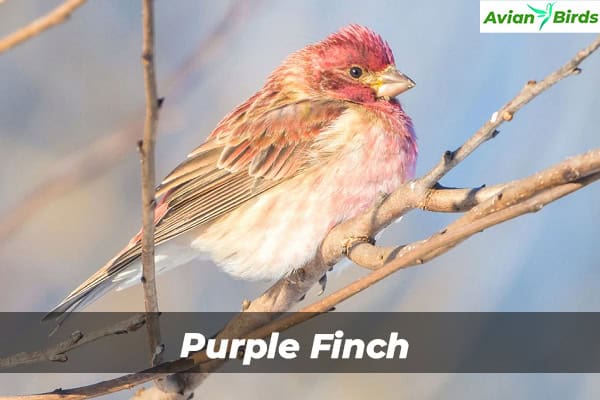
Distinguishing Features from Similar Birds
The Purple Finch stands out from the House Finch with its bright plumage. Males have a rosy, reddish chest, while females have a brown and streaked look. House Finches are less colorful and uniform. They also have different body shapes and bill sizes. The Purple Finch’s bill is conical, perfect for cracking seeds.
To draw Purple Finches to our feeders in Michigan, we should:
- Offer sunflower seeds and thistle seeds, their go-to snacks.
- Use a mix of feeders to match their eating styles.
- Put feeders near shrubs or trees for their safety.
8. Red Crossbill
- Name: Loxia curvirostra
- Size: 5.5–7.5 in
- Diet: Conifer seeds, insects
- Lifespan: Up to 8 years
- Wingspan: 10–11 in
- Weight: 0.8–1.4 oz
The Red Crossbill is a unique bird in Michigan, known for its special bill. This bill helps it eat seeds from pine cones. It shows how this bird depends on conifer trees for food.

Identifying a Red Cross bill is easy once you know what to look for. Males have bright red feathers, while females are more yellow-brown. Their bill is the most striking feature, perfect for getting seeds out of pine cones.
These birds live in forests with lots of pine, spruce, and fir trees. They build nests in hidden spots to keep their babies safe. They move around Michigan based on where they can find food, following the seeds of these trees.
Learning about the Red Crossbill lets us explore Michigan’s bird diversity. Whether you love birdwatching or just enjoy nature, seeing this bird is special. It helps us value the different birds that live in our state.
| Feature | Description |
|---|---|
| Bill Shape | Crossed, adapted for seed extraction from conifers |
| Male Coloration | Bright red plumage |
| Female Coloration | Yellow-brown, less vibrant |
| Habitat | Coniferous forests, particularly pines and spruces |
| Nesting Preference | Secluded areas within dense foliage |
| Diet | Seeds from conifer cones |
Check Our Previous Articles:
| Blue Birds in Pa (Pennsylvania) |
| Black and White Birds in Michigan |
| Brown Birds In Michigan |
| Yellow Birds in Colorado |
| Black Birds in Michigan |
Wrapping Up…
Our journey into Michigan’s red birds has shown us a world full of life and color. From the Northern Cardinal to the Scarlet Tanager, each bird brings its own special touch. By watching birds in Michigan, we learn more about the beauty around us.
Want to see more red birds? Try using different bird feeders and making your yard a bird-friendly place. These simple steps can help you spot these beautiful birds. It also helps us appreciate nature more and enjoy Michigan’s rich bird life.
Learning about Michigan’s red birds helps us connect with nature and love its creatures. Let’s take time to enjoy their beauty and sounds. Every birdwatching moment becomes a special memory of our world.

